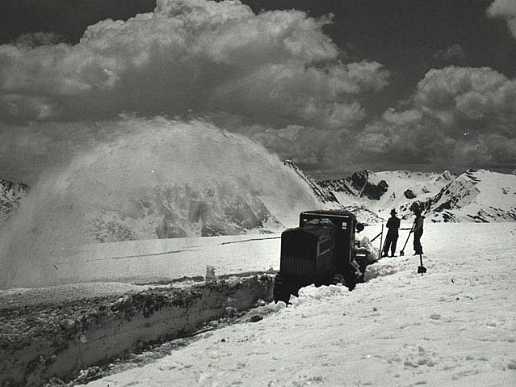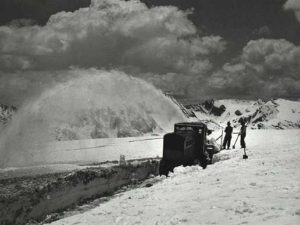Can You Make Your Snowblower Throw Snow Farther?


Last winter, I was blowing snow from my driveway, but the blower was hardly getting the snow to clear the snowbanks, which are about 4 feet high. There was a lot of snow! To help deal with this situation I sought out ways that could make my snow blower throw the snow farther. This article will be particularly helpful to anyone facing a similar problem.
Tips on How to Make a Snowblower Throw Snow Farther
First, you need to know that a snow blower can save you a lot of hassle if you have the right one for your particular home scenario. There are different types of snow blowers: single-stage gas, single-stage corded electric, single-stage battery powered, and the two-stage gas blower. Not every tip will apply to all types of snowblowers, so keep an eye out for which advice applies to your situation.
Items Needed – In Order of Difficulty
- Nonstick cooking oil
- Tool kit
- Impeller kit – either buy one like this one on Amazon or get the parts yourself
Improve your snow blower’s performance
If you are looking to maximize the efficiency of your snow blower, here are a couple of tips that could help you throw the snow farther from your driveway. To begin with, you can improve its performance by spraying the inside of the chute and all the auger parts such as the fan with a nonstick cooking spray. This offers a slippery surface for the snow to continuously flow without sticking. Less resistance in the chute should translate to more distance in the throw.
Cooking spray will help all snowblowers and snow shovels somewhat – though bigger gains should come the more powerful the device. Some people substitute liquid graphite spray and swear by it’s use. I personally haven’t tried it yet but might give it a shot this winter just to see how well it compares to cooking spray.
You can also enhance the performance of your snow blower by ensuring that your idler pulley retains the correct tension on the blower’s auger belt. I also recommend that you properly adjust the scraper bars and skids; you can learn how to do it yourself by watching tutorial videos online such as this one:
Another effective way to make your snow blower throw the snow farther out is by building an impeller kit. I would recommend this method to you if you were handy with tools to build the size of impeller that you want. An impeller kit can greatly increase the blower’s throwing distance.
What exactly increases a snow blower’s throwing distance?
There are a lot of variables that affect the snow blower’s throwing distance and at the top of the list is the impeller diameter. A small impeller means that the throwing distance will be short and vice versa. Moreover, the throwing distance is also influenced by your impeller’s rpm, the type and depth of snow, the engine power, and the type of blower.
Adding an impeller kit helps to tighten the clearance of the impeller to the drum. In fact, most people that have tried this state that it increases the overall throwing distance and effectiveness of the snow blower. It’s especially effective for wet snow.
Moreover, a chute that has a 180 degree rotation can be more efficient. There is less chance of rust buildup with this feature. Rust can cause snow to stick to it, and you need to ensure that the chute, impeller, and drum are rust free to increase your blower’s throwing distance.
If snow accumulation in your premises has been stressing you out and your snow blower has not been performing efficiently, I would recommend installing a larger top pulley for your auger. However, you should be aware that if you install a bigger pulley than is necessary, your gear case could fail because of running your auger at higher rpms.
As such, when you need to make your snow blower throw farther, you need to keep in mind that many variables will determine the distance of the throw. They include the rpm of the impeller. Newer blower models have higher rpms and this increases the throwing capacity to about 40 percent.
The exit strategy of the snow also counts, a blower that funnels the snow before shooting it out the chute increases the throw. Other factors include the clearance between the impeller and outer housing, the impeller’s size, and the number of blades on the impeller.
What is the difference between single- and two-stage gas blowers?
The single-stage gas snow blower is most suitable if your driveway or sidewalk is flat or mid-sized, and the snowfall in your area is below 8 inches. These machines are easier to handle, and they are lighter than the two-stage models. The majority clear a 20 to 22 inch swath.
The single-stage electric snow blower is ideal for you if your sidewalk and/or driveway is short or flat, and the snowfall in your location is below 4 inches. The single-stage electric snow blowers are the smallest, lightest, and easiest to operate, and they are less noisy. They clear about 11 to 18 inches.
On the other hand, the two-stage is perfect if your driveway is long, wide, and/or hilly, and the average snowfall within your locale goes beyond 8 inches. This type of blowers has driven wheels, an electric start, an auger to gather snow, and an impeller to throw the snow. Most can clear a 24 to 32 inch swath.
If you are looking for a more in-depth discussion, check out our comprehensive guide for advice on picking the best snowblower features for you.
Conclusion
Heavy snowfall can be rough especially when it comes to eliminating the snow from your sidewalk or driveway. If you follow my tips and advice, hopefully it’ll be a little less stressful time.

